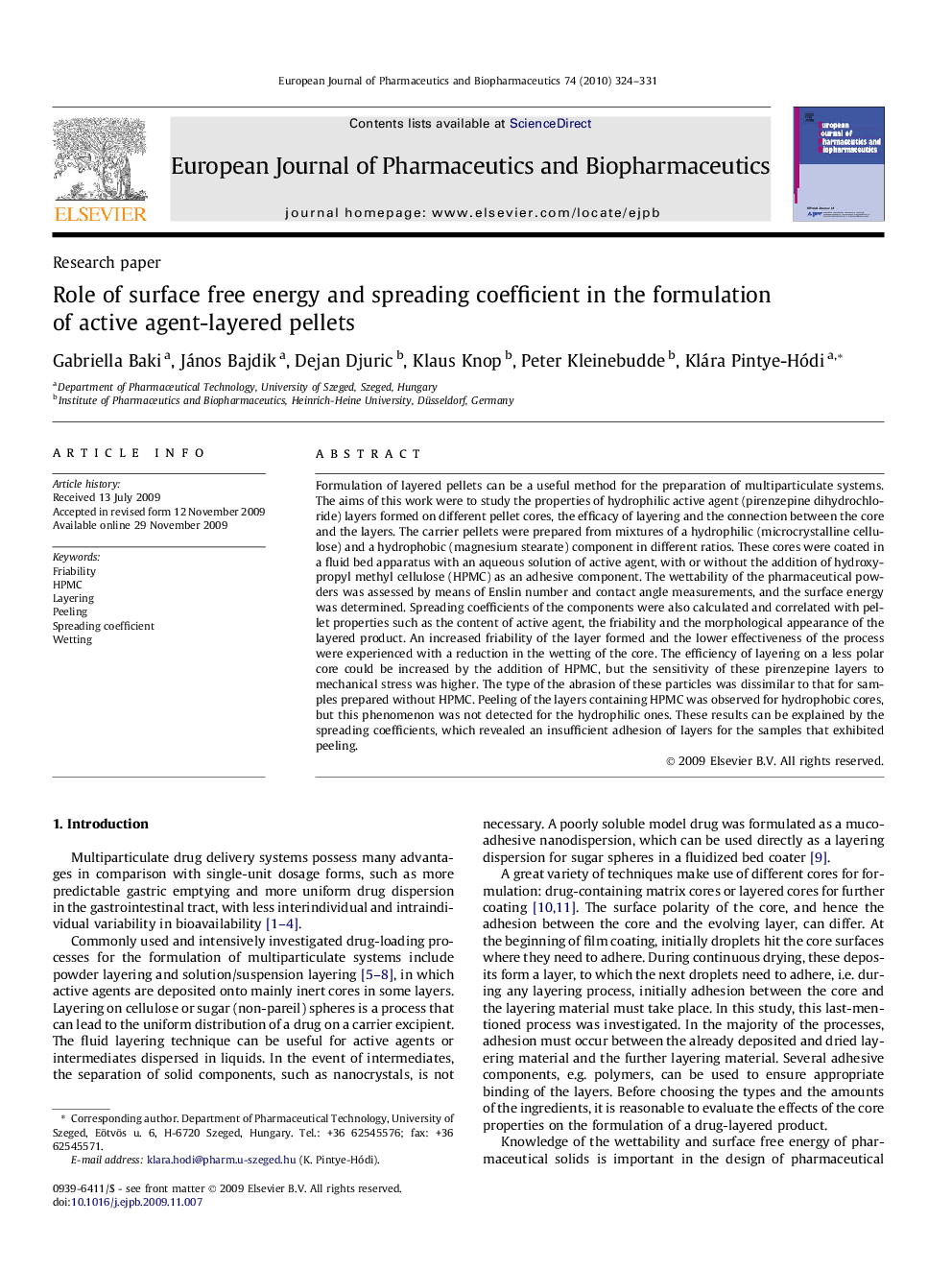| Article ID | Journal | Published Year | Pages | File Type |
|---|---|---|---|---|
| 2085564 | European Journal of Pharmaceutics and Biopharmaceutics | 2010 | 8 Pages |
Formulation of layered pellets can be a useful method for the preparation of multiparticulate systems. The aims of this work were to study the properties of hydrophilic active agent (pirenzepine dihydrochloride) layers formed on different pellet cores, the efficacy of layering and the connection between the core and the layers. The carrier pellets were prepared from mixtures of a hydrophilic (microcrystalline cellulose) and a hydrophobic (magnesium stearate) component in different ratios. These cores were coated in a fluid bed apparatus with an aqueous solution of active agent, with or without the addition of hydroxypropyl methyl cellulose (HPMC) as an adhesive component. The wettability of the pharmaceutical powders was assessed by means of Enslin number and contact angle measurements, and the surface energy was determined. Spreading coefficients of the components were also calculated and correlated with pellet properties such as the content of active agent, the friability and the morphological appearance of the layered product. An increased friability of the layer formed and the lower effectiveness of the process were experienced with a reduction in the wetting of the core. The efficiency of layering on a less polar core could be increased by the addition of HPMC, but the sensitivity of these pirenzepine layers to mechanical stress was higher. The type of the abrasion of these particles was dissimilar to that for samples prepared without HPMC. Peeling of the layers containing HPMC was observed for hydrophobic cores, but this phenomenon was not detected for the hydrophilic ones. These results can be explained by the spreading coefficients, which revealed an insufficient adhesion of layers for the samples that exhibited peeling.
